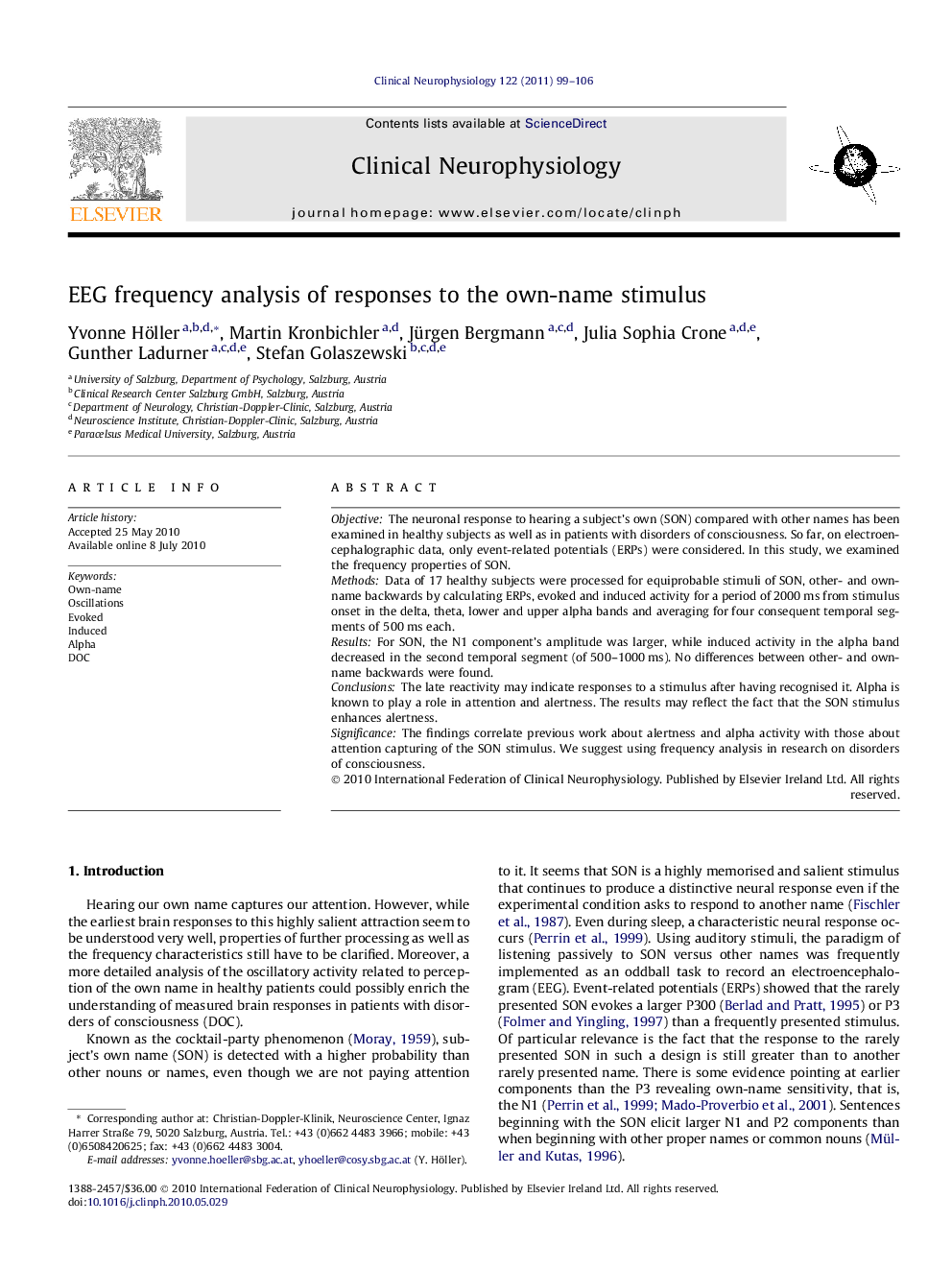| Article ID | Journal | Published Year | Pages | File Type |
|---|---|---|---|---|
| 3044249 | Clinical Neurophysiology | 2011 | 8 Pages |
ObjectiveThe neuronal response to hearing a subject’s own (SON) compared with other names has been examined in healthy subjects as well as in patients with disorders of consciousness. So far, on electroencephalographic data, only event-related potentials (ERPs) were considered. In this study, we examined the frequency properties of SON.MethodsData of 17 healthy subjects were processed for equiprobable stimuli of SON, other- and own-name backwards by calculating ERPs, evoked and induced activity for a period of 2000 ms from stimulus onset in the delta, theta, lower and upper alpha bands and averaging for four consequent temporal segments of 500 ms each.ResultsFor SON, the N1 component’s amplitude was larger, while induced activity in the alpha band decreased in the second temporal segment (of 500–1000 ms). No differences between other- and own-name backwards were found.ConclusionsThe late reactivity may indicate responses to a stimulus after having recognised it. Alpha is known to play a role in attention and alertness. The results may reflect the fact that the SON stimulus enhances alertness.SignificanceThe findings correlate previous work about alertness and alpha activity with those about attention capturing of the SON stimulus. We suggest using frequency analysis in research on disorders of consciousness.
